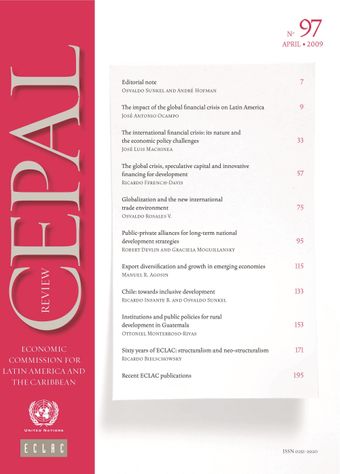-
Sixty years of eclac: Structuralism and neo-structuralism
- Source: CEPAL Review, Volume 2009, Issue 97, Jul 2009, p. 171 - 192
- Spanish
-
- 27 Jul 2009
- Previous Article
- Table of Contents
- Next Article
Abstract
This article analyses the thinking and key ideas generated by eclac throughout its six decades of life, by reviewing the work published since its creation in 1948, in both the structuralist stage (1950s, 1960s, 1970s and 1980s) and the neo-structuralist phase (since 1990). It then reviews the most important contributions made between 1998 and 2008, which address the effects of the structural reforms of the 1990s; the agenda for the global era; approaches to rights, citizenship and social cohesion; the Schumpeterian-structuralist convergence and countercyclical macroeconomic policies under conditions of financial volatility. The article discusses the similarities and differences between the two phases and concludes that neo-structuralism has remained analytically very close to structuralism.





